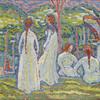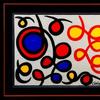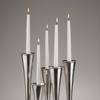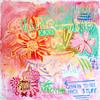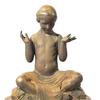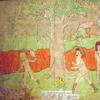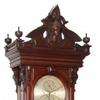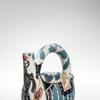Phulkari: The Embroidered Textiles of Punjab from the Jill and Sheldon Bonovitz Collection
- PHILADELPHIA, Pennsylvania
- /
- March 07, 2017
On March 12, The Philadelphia Museum of Art will present the first major American exhibition of phulkari textiles, exquisite embroideries made in Punjab, a region that comprises north central India and eastern Pakistan. This vibrant tradition, shaped by women and passed down through generations, has become a powerful symbol of Punjabi cultural identity. Phulkari: The Embroidered Textiles of Punjab from the Jill and Sheldon Bonovitz Collection celebrates the promised gift of their collection of these rare embroideries. Exhibited together with other examples from the Museum’s collection, these works span a period from the mid-nineteenth century until the Partition of India in 1947. The exhibition also includes contemporary fashion in which the creative use of phulkari embroideries suggests a powerful revival of this boldly designed and colorful textile art today.
Timothy Rub, The George D. Widener Director and CEO of the Philadelphia Museum of Art, said: “This exhibition, which examines the artistic, cultural, and political significance of phulkari, is long overdue and will certainly delight visitors who may be unfamiliar with this remarkable art form. Once again, our collection has been greatly enriched through Jill and Sheldon Bonovitz’s generosity. This promised gift has also enhanced the reputation of the institution as a premier destination for the study and appreciation of South Asia’s world-renowned textile traditions.”
The major focus of the exhibition will be on pre-Partition textiles handwoven in cotton and embroidered in lustrous Chinese silk. Some phulkaris feature animals and village scenes, while others are ornamented with elaborate geometric patterns in rich pink and gold conveying good fortune and social status. To demonstrate the continuing influence of these traditional textiles, contemporary couture created by one of India’s leading fashion designers, Manish Malhotra, will also be on display. Runway fashions from his 2013 collection celebrate the bright colors and intricate patterns found on traditional phulkaris, demonstrating their broad appeal on the international stage. In addition to high fashion, the show will include videos that examine the political and social upheaval created by the partition of the Indian subcontinent in 1947 and how it disrupted this textile tradition as well as the later revival of phulkari as a symbol of Punjabi pride.
Phulkari embroideries historically served as a significant symbol of a Punjabi woman’s material wealth and were deemed an important part of her wardrobe. They were typically worn as shawls draped over the head on special occasions such as marriages, births, and other rituals.
Dr. Cristin McKnight Sethi, co-curator of the exhibition, said: “These works serve as a way to map a family’s or a community’s history. They are canvases upon which a woman could express her desires and worldview through needle and thread. By looking closely, we can study just how deeply these makers valued their cloths and how they invested them with meaning.”
Dr. Darielle Mason, the Museum’s Stella Kramrisch Curator of Indian and Himalayan Art, notes: “Phulkari embroideries hold immense historic significance and emotional power for those of Punjabi heritage and members of the Sikh religious community who now live around the world. On a purely aesthetic level, with their almost neon colored silk threads set against deep earth toned rough cotton, phulkaris are among of the most visually stunning textile types ever created.”
The book, Phulkari: The Embroidered Textiles of Punjab from the Jill and Sheldon Bonovitz Collection, edited by Dr. Darielle Mason with essays by Dr. Cristin McKnight Sethi and Dr. Mason, accompanies the exhibition.




